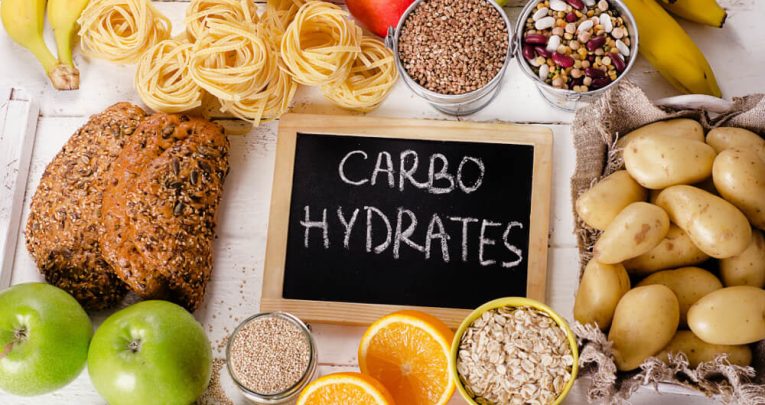Learning About Carbohydrates in the Early Years

In the first of a series of articles on food and nutrition, Patricia Pillay shares growing and cooking activities to try with your children…

Teaching children about how and why different types of food are important for their bodies, alongside learning about where their food comes from, how it grows and how it is prepared, helps give them the knowledge they will need to make healthy decisions about buying, preparing and eating food, throughout their lives.
What are carbohydrates?
Carbohydrate is found in plants; it is formed from the starch, or fuel, which plants produce as their own food to help them grow. When we harvest, cook and eat the part of the plant that produces this starch, we are using the plant’s food to fuel our own bodies. Consequently carbohydrates are foods which give us energy.
Young children are growing and developing faster than at any other time in their lives and it is difficult for them to meet their resulting energy needs without several portions of carbohydrates each day.
There are many different carbohydrate foods available today in the UK. Some of these may be unfamiliar to the children in your setting and you will probably find that some of the children regularly eat carbohydrate foods which you, yourself, may not have come across.
Grains such as rice, wheat and oats are familiar carbohydrate foods, but there are many others. For example, rye is common in the breads of eastern European countries and corn is widely eaten in southern Africa.
Plants with starchy tubers also provide us with carbohydrates. Most people will be familiar with potatoes, and increasingly, sweet potatoes, but some of your children may be more familiar with yams or manioc.
Below you will find some cooking and growing activities to help you explore carbohydrates with the children in your setting.
Indoor cooking – Tabbouleh
This is a lovely sensory cold cooking activity which also helps teach children that some foods take more time and are not ready instantly. The tabbouleh will need to be left covered overnight in a fridge. While this is a perfect summer recipe, it could also be made all year round and requires no special equipment.
Encourage children to work together to prepare the tabbouleh.
You will need:
- 125g cracked wheat, bulgur wheat or couscous
- Handful of fresh mint
- 250g ripe tomatoes
- 1 lemon
- 3 tbsp olive oil
What you need to do
Weigh the wheat and tomatoes. Let children use a tablespoon to spoon the wheat into a large bowl and to measure olive oil into the bowl. Children can wash the tomatoes and mint, before drying them on kitchen paper.
They can then use clean scissors and safety knives to cut the tomatoes and mint, and add them to the bowl. Let children take turns squeezing the lemons before pouring the juice into the bowl and mixing everything together.
Cover and refrigerate overnight; talk about what changes you might see the next day.
The next morning the children will rediscover the enticing aromas of lemon and mint as they stir their tabbouleh. Serve the tabbouleh on its own for a snack or alongside a protein food, such as roast lamb, for lunch.
Outdoor cooking – Dampers
For settings that are confident using fires with children, making campfire dampers is an opportunity for children to cook their own snack outdoors.
Alternatively, if you are not confident in using fires with your children, children can prepare their dampers and staff can cook these dampers on an open fire or barbecue as children watch.
You will need:
- 500g flour
- 200 ml clean water
- 1 tbsp cooking oil
- Jam or grated cheese
- Bowls for mixing in
- Boards for rolling out the dough
- Sticks – choose strong, straight sticks and wrap foil tightly around most of the stick, leaving a handle free of foil at one end.
What you need to do
Children can spoon the flour into the bowl (500g will be about 16 tbsp – for this recipe, measurements do not need to be exact). Let children add water and oil gradually as they mix, to make a firm dough.
Divide the dough into 8–10 pieces, roll this into long sausage shapes and wrap these around your foil-covered sticks.
Cook the dampers over the glowing embers of your fire for about 10 minutes.
Children will then need help to slide their hot dampers off the sticks. Make sure that children count to 20 before eating so that the damper has time to cool.
Provide small bowls of jam or grated cheese for children to dip their dampers in.
Remember, all your usual fire safety rules will apply.
Indoor growing – Sprouting grains
Many whole grains can be sprouted. As whole grains are actually the seeds of a plant this enables children to observe how seeds start to grow into plants, increasing their understanding of where food comes from.
Once the seeds have sprouted they can be washed thoroughly and cooked. It’s really important to cook them to eliminate any bacteria. Stir-frying is a good way as it involves cooking at a very high temperature.
You will need:
- Whole grains – such as wheat, barley, buckwheat. ‘Health’ or ‘natural’ food shops or supermarket aisles are good places to find these.
- Clear glass or plastic container
- A cover for your container that will allow ventilation but prevent dust and dirt getting in. A clean piece of cheesecloth or muslin, such as that sold for jam or cheese making, or a clean pieces of net curtain, is fine for this.
What you need to do
Wash the grains in cold water. Drain and put into your container. Cover the grains with fresh, cold water, cover your container with the muslin and secure this in place with string or an elastic band.
Leave for about 12 hours in a warm spot out of direct sunlight, then drain and rinse the grains; put them back in the container covered with fresh water. Repeat this twice a day, morning and evening for a few days and you should have freshly sprouted grains.
Warning – if your grains become slimy or look or smell bad, do not eat them.
Outdoor growing – Growing potatoes
For a longer-term growing project, if you have garden space available, try growing potatoes, another great carbohydrate source.
You will need:
- Seed potatoes
What you need to do
Children can sit the seed potatoes in egg boxes in a light space for a few days, watching for signs that the seed potatoes are beginning to sprout. They can then dig a deep trench and lay the seed potatoes in this before covering them with earth.
Over the next few weeks, children can pile more earth onto any leaves that appear. This will encourage a bigger crop of potatoes. After about 13 weeks the leaves will die off and your potatoes will be ready for the children to dig up. A real treasure hunt.
However you decide to explore carbohydrates, remember to look for opportunities to involve parents and so make links between children’s experiences at home and in the setting. Ways to do this might include talking with parents and children about what they eat at home, or holding a ‘bring and share’ event for parents, staff and children.
Patricia Pillay is an early years consultant and qualified forest school leader. Email her at patricia.pillay@outlook.com.











